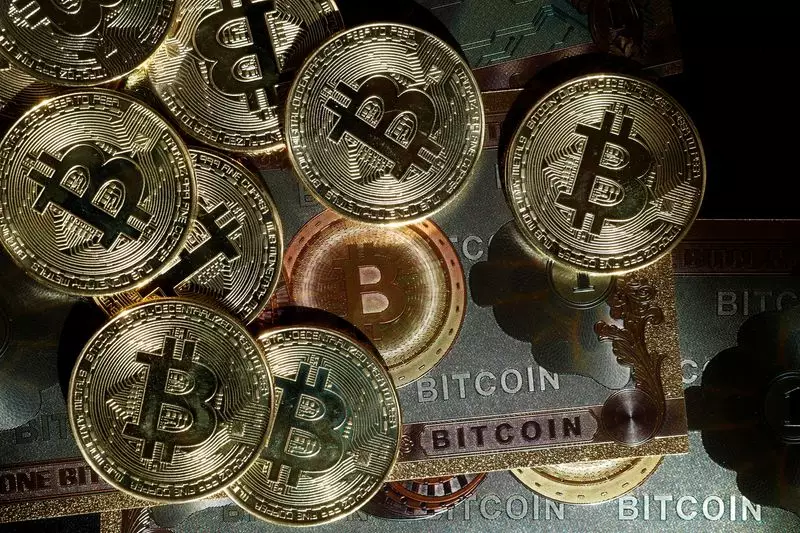The financial markets are experiencing significant shifts as global monetary policies continue to adapt to evolving economic conditions. Particularly, the interplay between cryptocurrencies like Bitcoin and traditional currencies highlights the effects of central banking decisions and market sentiment. This article will dive deeper into the latest trends in these markets, analyzing the underlying factors driving changes and the implications for investors globally.
Bitcoin has recently emerged as the standout performer in the cryptocurrency market, reaching new heights after a robust rally that propelled it to one-month highs. As of Monday, Bitcoin surged by approximately 0.8%, trading above $63,200. This upward trend can be attributed to a mix of market optimism surrounding future Federal Reserve interest rate cuts and a growing institutional interest in the digital currency. The Fed’s recent decision to implement a substantial 50 basis point rate cut has not only provided a stimulus to equity and commodity markets but also reignited enthusiasm for riskier assets like Bitcoin.
The rhetoric circulated by financial analysts indicates that the Fed’s actions seem to alleviate concerns regarding a potential recession in the United States. Institutions such as Goldman Sachs posit that the probabilities involving further rate cuts lend a favorable backdrop for Bitcoin’s growth. As traditional investors look for hedges against inflation and economic uncertainty, Bitcoin’s appeal as a digital store of value continues to attract attention, suggesting a possible shift in market dynamics toward cryptocurrencies.
While Bitcoin flourishes, traditional currencies, particularly the Japanese yen, are witnessing stagnation, especially given Japan’s recent market holiday for the Autumnal Equinox. Last week, the yen showed signs of weakness against the U.S. dollar, which reached a high of 144.50 yen—the strongest it has been in two weeks. This shift followed the Bank of Japan’s decision to maintain its interest rates at historic lows, which has raised questions about the currency’s immediate outlook.
The yen’s lackluster performance can partly be attributed to the cautious stance taken by the BOJ, which appears unwilling to adjust its monetary policy strategy prematurely. As Japan prepares for upcoming political changes, including leadership votes within the ruling party, the yen faces the challenge of navigating through increasing market uncertainties. Each potential successor to Prime Minister Fumio Kishida presents differing views on monetary policy, further complicating the landscape for the currency.
Concurrently, the U.S. dollar has demonstrated resilience amid fluctuating market conditions. After sustaining a modest gain to settle at 100.8, the dollar index displayed some stability, hovering above last week’s one-year low. Traders are pricing in expectations of additional rate cuts, indicating a shift in sentiment toward the currency’s future performance. Fed futures traders anticipate at least 75 basis points in cuts by the end of the year, translating into more favorable conditions for the dollar in the immediate term.
Moreover, the U.S. Treasury yield curve is steepening in response to these policies, reflecting investor confidence in potential economic recovery facilitated by the Fed’s actions. However, the long-term forecast suggests a more pessimistic view, with expectations of easing conditions returning by mid-2026.
The political landscape in Japan adds another layer of complexity, as the upcoming decision regarding the prime minister will likely influence the BOJ’s monetary strategy. Notably, the frontrunners in the ruling Liberal Democratic Party present diverging strategies that could have significant repercussions for the yen. The potential that Liberal Democratic candidate Sanae Takaichi, a reflationist, could take office raises concerns about the BOJ’s capacity for policy normalization.
Analysts warn that if a candidate advocating for a looser fiscal policy is elected, this could hinder Japan’s journey towards addressing inflationary pressures. Consequently, the market anticipates a tougher environment for the yen, as investors recalibrate expectations amidst evolving fiscal priorities.
As the global financial landscape undergoes rapid transformation, both cryptocurrencies and traditional fiat currencies must navigate varied economic realities shaped by central bank policies and political dynamics. Bitcoin’s recent ascendance amid rate cuts presents an intriguing alternative to traditional currencies struggling to find momentum. Conversely, the yen’s stagnation highlights significant challenges brought on by domestic political uncertainties and a wait-and-see approach from the BOJ.
Investors need to stay vigilant as these developments unfold, striking a balance between opportunities presented by innovative asset classes and the inherent risks associated with traditional currencies influenced by monetary policy. The path ahead remains fraught with volatility, making strategic decision-making essential for capitalizing on the unfolding economic landscape.

